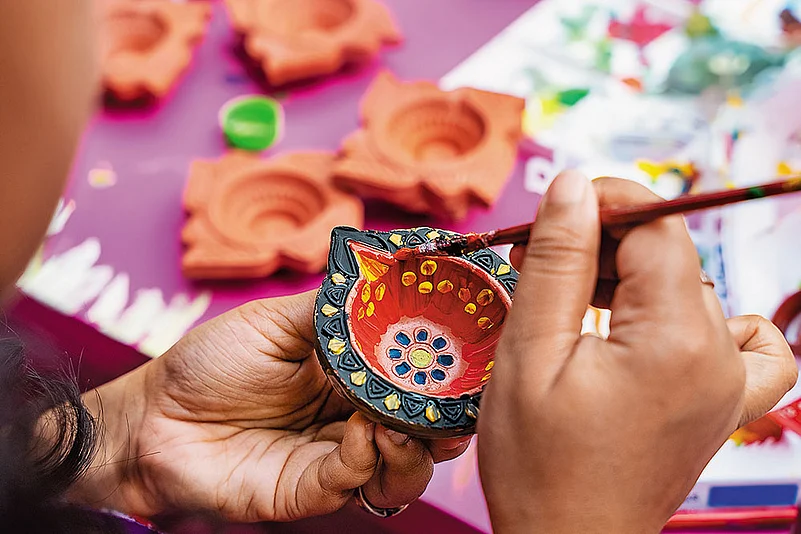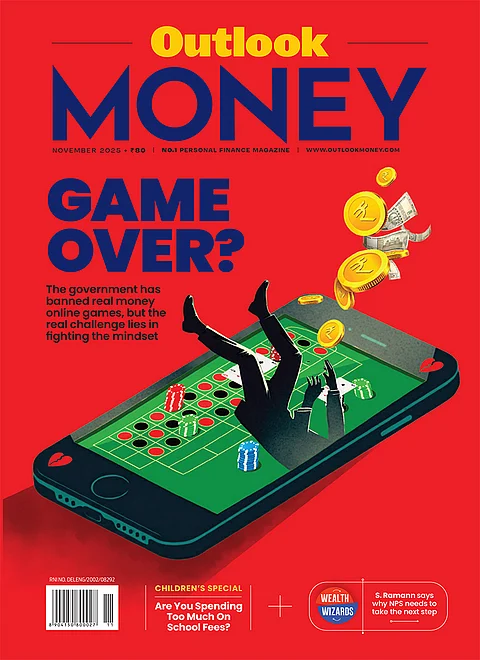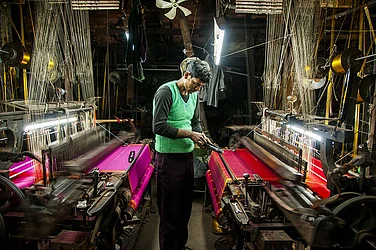This Diwali rings different. Due to the recent cut in the goods and services tax (GST) rate, there is optimism in the air as the financial burden on households has reduced. It will provide relief to households with children, those who spend substantially on healthcare, and those planning to buy big-ticket items like cars under 1,200cc and white goods like air-conditioners and televisions, among others.
But it is in periods like these that a lot of people tend to overspend, too. Tempted as you may be to spend more, don’t let the emotional nudge of saving on GST push you into overspending because there are other uncertainties looming given the steep US tariffs and geopolitical situations.
Instead, the sensible thing to do would be to assess how much saving this rate cut will translate into. Our estimate is the impact won’t be huge on everyday items in most cases.
It is your own individual situation that should guide your spending decision. Diwali is the time to emotionally connect with your loved ones over festivities, food and fun. It is also the time to take stock of your financial health, and if spending big is not something you can afford to do, then so be it. There is always the option to go minimalist—after all, Diwali is about new beginnings.
Says Amit Suri, founder of AUM Wealth, a financial services firm, and a certified financial planner (CFP): “A simple puja at home, lighting diyas together, and spending quality time with loved ones can keep the cultural fabric intact while cutting down on costs. Minimalist celebration is about shifting the focus from what money can buy to the memories we create.”
So, if you are ready to junk the expensive decorations, or renovations that are not really required, or the designer dress that will only add to your already overcrowded wardrobe, we have a guide for you to plan and curate a minimalist Diwali.
Smart Hacks To Cut Costs
Avoid Big-Ticket Items You Don’t Need: Diwali is the time when you tend to buy big-ticket items like a car or white goods. The GST rate cut on these items is sure to lure you, but ask yourself: do you really need a brand new car or television?
If you were anyway planning to replace one of these items because of wear and tear, go ahead. If not, then put your buying on hold. “What can be avoided is any major new purchase like a vehicle, white goods, etc., which tends to happen during this period,” says Suresh Sadagopan, founder and principal officer, Ladder7 Financial Advisories, a financial planning and wealth advisory firm.
Go Local: Diwali is incomplete without Ganesha and Lakshmi idols, decorations and new clothes. Going local can help you contain costs.
A row of earthen diyas often look more beautiful than fancy decorative lights. “Decorate traditionally with old silk, earthen deepaks, flowers, and rangoli. They are easy on the pocket, and the money goes to local workers,” says Renu Maheshwari, principal advisor, Finzscholarz Wealth Manager, and a Securities and Exchange Board of India-registered investment advisor (Sebi RIA).
Approaching local artisans for clothes is another great idea over expensive branded clothes. “You celebrate with the local community and that is what creates a festive atmosphere,” says Maheshwari.
Get Creative and Reuse: You can get creative. Says Sadagopan: “Those who are creative (or would follow YouTube instructions!) can spruce up and decorate the home with their own creations, bringing in an element of originality, authenticity, and involvement in the celebrations.”
Besides the sense of satisfaction that creating something provides, it will be light on the pocket without dimming the splendour of Diwali. For instance, one can repurpose an old saree into a lehenga, salwar kameez or a festive dupatta. An old kurta can be dyed or spruced up for a new look.
You may also check out last year’s lightings to see what still works; repair the faulty ones instead of buying new ones. And check if you have leftover decorations from a bygone birthday or anniversary that can be repurposed creatively.
You could also spend your Dussehra-Diwali holidays to paint older diyas to add colour to your decorations and rangoli. Fresh flowers from your garden or balcony pots, or even trimmed leaves can be collected and sewn into streamers that will look natural and beautiful.
“We don’t need to look far to embrace a minimalist Diwali—our traditional ways embody simplicity, mindfulness, and community,” says Kiran Telang, Mumbai-based certified financial planner and author of Mindful Retirement.

She adds: “Decorations were simple yet meaningful—handmade torans, diyas, and lanterns crafted at home. Gifts were often homemade treats, shared with love. This approach kept expenses in check, and also promoted health and bonding. The act of coming together brought joy, connection, and well-being.”
Make Sweets At Home: Diwali delicacies were traditionally made at home. You can rekindle that tradition. It does involve effort, but making it a family activity can ease the burden, foment connection, and ensure traditional values are imparted through the generations.
Making Diwali sweets at home offers significant savings, too. Let’s take the example of Kaju Katli, a favourite sweet. Buying 2 kg from a good shop can cost around Rs 2,400. However, preparing the same quantity at home using quality ingredients like cashews, sugar, and ghee costs approximately Rs 1,200.
Beyond the financial benefit, homemade sweets guarantee better quality compared to the industry-level bulk production of sweets during the festive season. To top it all, the personal touch of a homemade treat makes it more special.
Gift From The Heart: The most memorable Diwali gifts are rarely the most expensive ones. A small potted plant, a thoughtfully chosen book, or a homemade hamper with sweets and savouries often leave a deeper impression than a costly gadget or a basket of expensive goodies.

“Small parcels of home-made traditional sweets are always more valuable than the expensive big pack of store-bought sweets,” says Maheswari. Almost every household complains of too much mithai and other eatables going waste because it’s simply not possible to consume the big boxes of items that usually come with an expiry date.
Even a handwritten note or a personalised card adds warmth that money can’t buy. “A thoughtful gift of Rs 500 can be cherished, while a generic one costing Rs 5,000 could be quickly forgotten; the key is gifting with intention, not with money,” says Suri.
If you can afford an expensive gift, encouraging a loved one to start on an investment path is a great idea. Coupons, direct account transfers, gold coins, a new mutual fund account or an insurance policy are something that your loved one will benefit from. “This would be a better idea as one is using a festive occasion to give something of value, and starting them on an investment path for their future,” says Suri.
Plan Your Spends Early: Most overspending happens when families rush into last-minute shopping. The discipline of planning pays off both in terms of money and peace of mind.
Planning even a month in advance allows you to benefit from bulk buying and festive discounts. “Whether it’s dry fruits, diyas, or clothes, early buying often saves 15-20 per cent compared to buying a day or two before the festival,” says Suri.
But when doing so, don’t get dazzled by festive discounts to buy what you don’t need or will never use. Remember that prices of some items are marked up before being discounted by local retailers. Track regular prices in advance and make informed comparisons to determine whether a deal is truly worthwhile. “Larger purchases—such as gadgets, appliances, or home improvement items—can especially benefit from this approach, as you will be ready to take advantage of authentic discounts when they become available during the festive season,” says Telang.
If travelling is on your cards during the festive season, planning early will help. Last-minute bookings often come with significantly higher costs during the festive season. However, booking too much in advance can backfire if plans change unexpectedly. To strike the right balance, look for options that offer free cancellations or flexible fares, especially on airlines. “These strategies provide a safety net, allowing you to take advantage of early pricing without the risk of losing money due to last-minute changes,” says Telang.
Avoid Debt
Most importantly, avoid taking any sort of loans during Diwali. If you follow our minimalist hack, you would be largely on track.
There are several personal loan offers floating in the market, where the money gets credited to your account immediately, but the interest rate on them is very high. For instance, if you take a Rs 5 lakh loan for three years at 18 per cent interest, you will have to pay an equated monthly instalment (EMI) of about Rs 18,000 every month, including an interest of about Rs 1.48 lakh over the loan tenure. Your EMIs will continue for the next three Diwalis.
Credit card spends can be used sparingly, as long as you are able to pay your bills by the due date. Otherwise, credit card debt can be worse than a personal loan. Similarly, even 0 per cent EMIs on a new iPhone can mean an additional expense every month for a year or two. Buy now pay later (BNPL) schemes can also land you in a debt trap. In short, before taking any kind of debt, assess your repayment capacity and the future prospects in terms of salary hikes, financial stability and so on.
This year, celebrate Diwali mindfully by focusing on simple traditions over extravagance. A minimalist approach will not rob the memories any festival builds.
meghna@outlookindia.com














